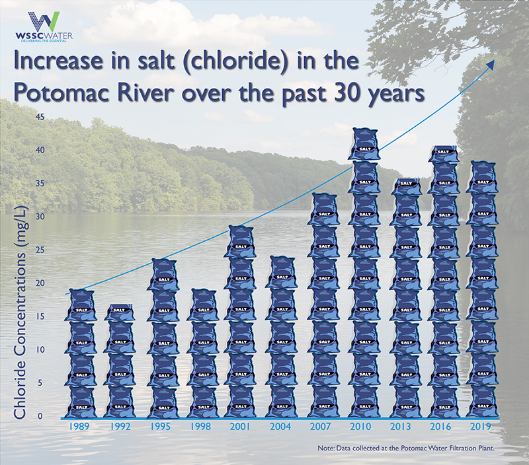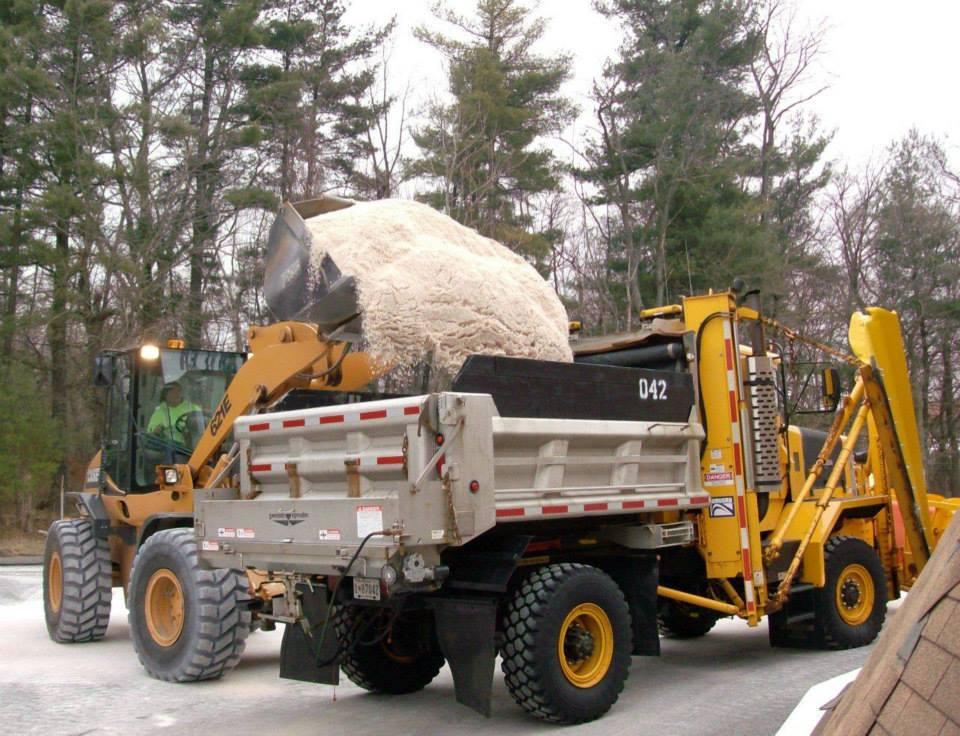So much has happened in the last six months that it is hard to believe that fall is here, and winter is around the corner. One issue of increasing concern is the accumulation of salt in the environment due to deicing during winter weather events. Sodium Chloride, the salt most frequently used as a deicer, dissolves in water and splits into sodium (Na+) and chloride (Cl-) ions, which depending on concentrations, can lower water’s freezing point to around 15°F.
Once in the environment, salt cannot be removed easily; it accumulates in the soil and travels into local streams, wells, and drinking water reservoirs. While other sources can contribute to salt in the environment, studies show that 90 percent comes from road salt. As more data becomes available, widespread environmental impacts are being better understood. Chloride, for example, affects both vegetation growth and aquatic life while sodium weakens soils’ aggregate structure, increases erosion, decreases water infiltration capacity, and affects root growth. In humans, salt in drinking water can contribute to increased hypertension. Additionally, salt can cause the release of other chemicals, such as lead and heavy metals into the environment. Lead causes neurological problems in children, and the potential impacts of heavy metals are not yet well understood. Finally, salt can cause corrosion of infrastructure, impacting the structural integrity of roads, bridges, and buildings.


Working towards a solution will require a community-wide effort. State highway authorities, municipalities, and the private sector are already implementing best management practices to reduce excess salt applications and clean up accidental spills. Some of these practices include using salt brine which reduces the amount of salt used, pre-wetting surfaces to reduce salt infiltration, and improving the calibration of equipment and using GPS technology for more accurate applications. Maryland Department of the Environment will be adding salt management practices in the next generation Phase I MS4 permits to help local jurisdictions incorporate these kind of practices already being implemented by the State Highway Administration in their winter operations. Montgomery County, Maryland is already working with private contractors to improve the calibration of equipment to reduce unnecessary salt applications and to coordinate the cleaning up of excess salt applications.
Additional resources:
Cary Institute Report (2019) - Road Salt: The Problem, The Solution, and How to Get There
Clear Roads (research consortium addressing winter maintenance)
Maryland Department of the Environment
https://mde.maryland.gov/programs/Marylander/Pages/roadSalt.aspx
Maryland Statewide Salt Management Plan, State Highway Administration
https://roads.maryland.gov/oom/statewide_salt_management_plan.pdf
Montgomery County-Winter Salt Management
https://montgomerycountymd.gov/water/education/winter-salt-management.html
Washington Suburban Sanitary Commission (WSSC)- Be Salt Wise

